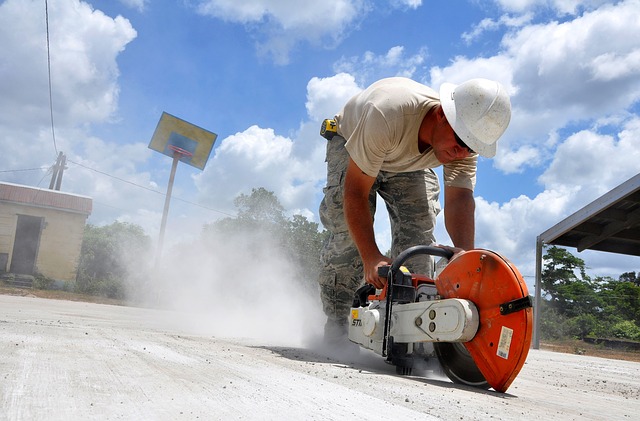Nuisance in construction
Contents |
[edit] Introduction
Nuisance is unreasonable interference with another party’s use of land. Nuisance can be public, private or statutory.
[edit] Public nuisance
Public nuisance affects classes of people and can constitute a criminal offence. For example obstructing the highway or pollution of water supplies.
[edit] Private nuisance
Private nuisance affects a specific person’s right to use or enjoy land. A person does not have to have a proprietary interest in land to suffer nuisance (Ref Khorasandjian v Bush 1993).
Private nuisance might be caused by:
- Encroachment onto land, for example by trees.
- Damage to land or buildings.
- Interference with a party’s enjoyment of the land, for example by generating excessive noise or smells.
For nuisance to be actionable, there must be actual or prospective damage, although this damage need not be physical, and might be demonstrated by encroachment or unreasonable material interference.
This is a matter of balance and degree, depending on how unreasonable the infringement is, the duration of the nuisance and the timing or repetition of the nuisance. This in turn can depend on circumstance, such as the character of a particular location and the types of activities that are carried out there. Activities that constitute nuisance in one location might be acceptable in another.
In Sturges v Bridgman (1879), Thesiger LJ stated, ‘what would be a nuisance in Belgrave Square would not necessarily be so in Bermondsey’.
The courts will also consider the intention of the defendant and whether there was any malice. Liability for nuisance requires that damage is foreseeable, although this does not necessarily constitute negligence.
Action may result in damages, abatement or injunctions.
[edit] Statutory nuisance
Under Part III of the Environmental Protection Act 1990 certain matters may constitute statutory nuisances:
- Noise.
- Artificial light.
- Odour.
- Insects.
- Smoke.
- Dust.
- Premises.
- Fumes or gases.
- Accumulation or deposit.
- Animals kept in such a place or manner as to be prejudicial to health or a nuisance.
- Any other matter declared by any enactment to be a statutory nuisance.
Where a local authority establishes any one of these issues constitutes a nuisance (i.e. it is unreasonably interfering with the use or enjoyment of someone’s premises) or is prejudicial to health, they must generally serve an abatement notice on the person responsible. Failure to comply with the notice could result prosecution.
[edit] Construction
Construction works are a potential cause of nuisance. However, construction is a necessary activity and in the case of Andreae v. Selfridge & Co. Limited (1938) Sir Wilfred Green MR suggested that ‘...in respect of operations of this character, such as demolition and building, if they are reasonably carried on and all proper and reasonable steps are taken to ensure that no undue inconvenience is caused to neighbours, whether from noise, dust, or other reasons, the neighbours must put up with it.’
Reasonable precautions that might be taken to reduce or avoid nuisance in construction might include:
- Keeping neighbours informed.
- Providing a help line so that problems can be reported.
- Only working at reasonable times and restricting noisy activities to particular periods.
- Storing fine materials under cover.
- Damping fine materials and roadways.
- Minimising demolition or crushing dust.
- Washing down vehicles.
- Taking care when deciding transport routes.
- Providing hard-surfaced roadways.
- Proper waste management and avoiding burning waste materials.
- Limiting vibration.
- Using well-maintained, quiet machinery.
- Careful sub-contractor management.
[edit] Related articles on Designing Buildings Wiki
- Air quality.
- Best practicable means.
- Clerk of works.
- Complaining about construction sites.
- Construction dust.
- Contract vs tort.
- Damage caused by construction works.
- Derogation from grant.
- Indoor air quality.
- Light pollution.
- Quasi-delict.
- Quiet enjoyment.
- Trespass.
- TSI Environmental dust monitoring system.
- Negligence.
- Pollution.
- Site inspections.
- Strict liability.
- Right to a view.
- Rights to light.
- What hours are construction sites allowed to operate?
[edit] External references
Featured articles and news
One of the most impressive Victorian architects. Book review.
RTPI leader to become new CIOB Chief Executive Officer
Dr Victoria Hills MRTPI, FICE to take over after Caroline Gumble’s departure.
Social and affordable housing, a long term plan for delivery
The “Delivering a Decade of Renewal for Social and Affordable Housing” strategy sets out future path.
A change to adoptive architecture
Effects of global weather warming on architectural detailing, material choice and human interaction.
The proposed publicly owned and backed subsidiary of Homes England, to facilitate new homes.
How big is the problem and what can we do to mitigate the effects?
Overheating guidance and tools for building designers
A number of cool guides to help with the heat.
The UK's Modern Industrial Strategy: A 10 year plan
Previous consultation criticism, current key elements and general support with some persisting reservations.
Building Safety Regulator reforms
New roles, new staff and a new fast track service pave the way for a single construction regulator.
Architectural Technologist CPDs and Communications
CIAT CPD… and how you can do it!
Cooling centres and cool spaces
Managing extreme heat in cities by directing the public to places for heat stress relief and water sources.
Winter gardens: A brief history and warm variations
Extending the season with glass in different forms and terms.
Restoring Great Yarmouth's Winter Gardens
Transforming one of the least sustainable constructions imaginable.
Construction Skills Mission Board launch sector drive
Newly formed government and industry collaboration set strategy for recruiting an additional 100,000 construction workers a year.
New Architects Code comes into effect in September 2025
ARB Architects Code of Conduct and Practice available with ongoing consultation regarding guidance.
Welsh Skills Body (Medr) launches ambitious plan
The new skills body brings together funding and regulation of tertiary education and research for the devolved nation.
Paul Gandy FCIOB announced as next CIOB President
Former Tilbury Douglas CEO takes helm.























